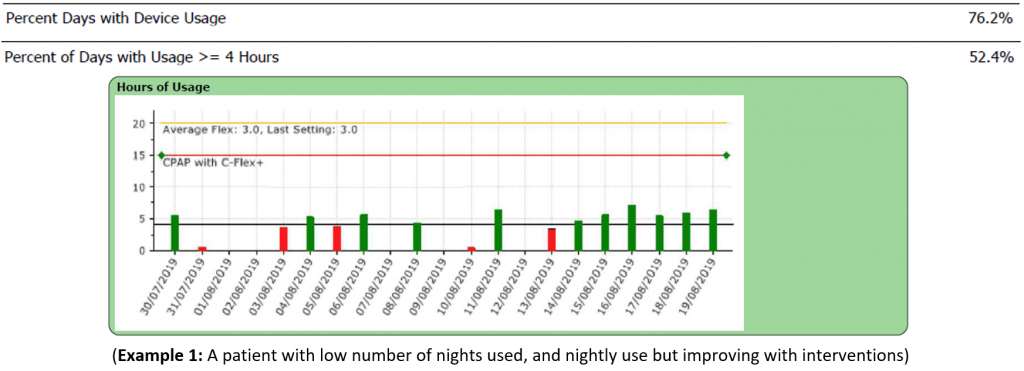
11 Oct Managing Patients’ on CPAP
Posted at 05:15h
in Medical Newsletter
How is remote monitoring used in clinical practice?
The Wesley Hospital CPAP Clinic uses remote monitoring for all patients who commence a CPAP trial. These patients have a weekly download performed. This data is then used to assess the efficacy, comfort & compliance of their therapy.
We find the following may help with this assessment:
- Frequency of data review: patients who experience difficulties with therapy for prolonged periods without support may be dissuaded from future use
- Looking at the data as a continuum: it is not uncommon for CPAP compliance to improve or deteriorate, and these changes may be rapid or progressive.
- Frequency of use and time spent using therapy: Nightly use, and the duration of use each night can help identify patients who are trying, but may be having some problems while using the therapy.
- Time spent in large leak: Mask leak can reduce the effectiveness of the therapy, but can also be an irritant and cause disruption to sleep. Leak may not always be known to the patient however. Leak can come from the mouth (when using nasal masks), the patient mask interface or from the CPAP circuit (eg tubing/humidifier connections).
- The average AHI: The CPAP machines use pressure/flow sensors to detect ongoing respiratory events, with some machines also being equipped with functions to detect the aetiology of these events (i.e. obstructive or central in nature).
Conclusions: This interactive process has significantly improved patient confidence in their therapy, providing improved intellectual, psychological & clinical outcomes.




